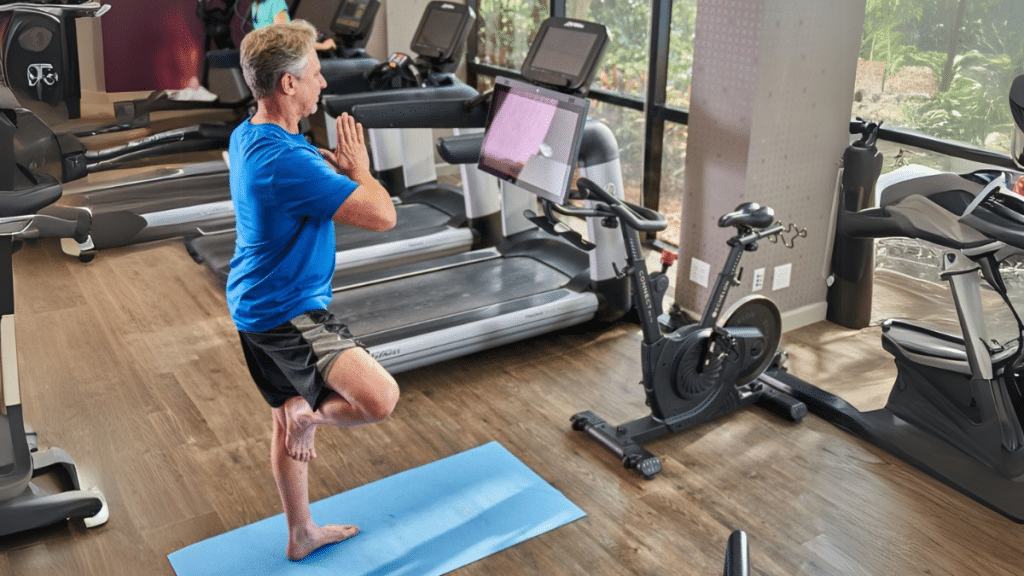Low impact exercises are a great way to stay active, build strength, and improve overall health without putting too much stress on your joints. Whether you’re recovering from an injury, managing joint pain, or just looking for a gentler way to stay fit, low impact workouts can be an excellent choice.
From swimming to resistance bands, let’s explore why these exercises are so beneficial and how they can fit into your fitness routine.
What Are Low Impact Exercises?
Low impact exercises are workouts that reduce stress on your joints while still helping you burn calories and build strength. Unlike high-impact exercises like running or jumping, low impact workouts involve smooth and controlled movements, making them easier on your body.
Some of the most popular low impact workouts include:
- Swimming – A full-body workout with no impact on your joints.
- Cycling – Whether on a stationary bike or outdoors, it’s great for cardio and endurance.
- Walking – Simple, effective, and easy to fit into your daily routine.
- Rowing – Builds strength and stamina without stressing the knees or hips.
- Yoga & Pilates – Improves flexibility, core strength, and mobility.
- Resistance Bands Workouts – A fantastic way to strengthen muscles without using heavy weights or high-impact movements.
Why You Should Try Low Impact Exercises
1. Protects Your Joints and Reduces Injury Risk
Low impact exercises help protect your knees, hips, and ankles from the wear and tear that high-impact workouts can cause. This makes them ideal for people with arthritis, past injuries, or those new to exercise.
2. Boosts Heart Health and Endurance
Cardio workouts don’t have to be high-impact to be effective. Activities like cycling, rowing, and swimming can improve heart health, endurance, and lung capacity while being gentle on your body.
3. Great for Weight Loss and Muscle Toning
Many people think you need high-intensity workouts to burn fat, but that’s not true! Exercises like walking, using resistance bands, and elliptical training can help you lose weight and tone muscles effectively.
4. Improves Flexibility and Mobility
Yoga, Pilates, and stretching-based workouts enhance flexibility and mobility, reducing stiffness and improving overall movement. These exercises also help strengthen the smaller muscles that support your joints.
5. Perfect for Recovery and Active Rest Days
If you’re a regular gym-goer or an athlete, low impact exercises can help with recovery. They keep your body moving on rest days without causing fatigue or increasing injury risk.
6. Supports Mental Health and Well-being
Low impact activities like walking in nature, swimming, and yoga help reduce stress, improve mood, and boost overall mental well-being. Regular movement releases endorphins, which can help fight anxiety and depression.
How to Incorporate Low Impact Exercises into Your Routine
Adding low impact workouts to your routine is simple. You can replace one or two high-impact sessions each week with activities like cycling or swimming. If you’re recovering from an injury, start with resistance bands, walking, or yoga.
The key is to find activities you enjoy and can stick with consistently. Whether it’s a morning walk, an evening swim, or a Pilates session, consistency will help you see results.
FAQ: Common Questions About Low Impact Exercise
1. Are low impact exercises good for weight loss?
Yes! Low impact workouts like walking, cycling, and resistance band exercises can help burn calories and support weight loss, especially when combined with a balanced diet.
2. Can I build muscle with low impact exercises?
Absolutely. Resistance bands, bodyweight exercises, and rowing are great for building strength without heavy weights or intense movements.
3. Are low impact exercises only for older adults?
No, low impact workouts are beneficial for everyone, including younger individuals who want to protect their joints or improve endurance in a safe way.
4. How often should I do low impact workouts?
It depends on your goals. You can do low impact workouts daily if they are moderate in intensity. If they are more intense (like swimming or rowing), aim for 3-5 times per week.
5. Can I combine low impact and high impact exercises?
Yes! A mix of both can create a well-rounded fitness routine. For example, you might do strength training and running some days and low impact workouts on recovery days.
Final Thoughts
Low impact exercises are a fantastic way to stay active, improve your health, and protect your joints. Whether you prefer walking, swimming, or using resistance bands, these workouts offer countless benefits without the risk of high-impact strain.
If you’re looking for an effective, joint-friendly way to exercise, start incorporating low impact activities into your routine today!
Prepared by Michael Geraghty from SuperStrong Fitness
